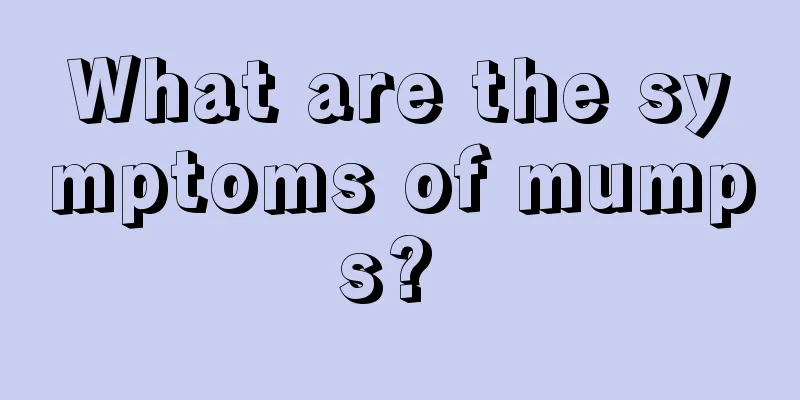What are the symptoms of mumps?

|
Children will face greater threats in terms of health because their resistance is not fully developed and they are unable to respond effectively to external viral attacks and thus become ill. For example, mumps is a common disease that has a great impact on children’s health. Let’s take a look at the classifications of mumps symptoms. 1. Suppurative parotitis It is usually unilateral and bilateral involvement is rare. In the early stages of inflammation, symptoms are mild or not obvious, with slight pain, swelling, and tenderness in the parotid area. The catheter opening is slightly red, swollen and painful. As the disease progresses, fever, chills, and unilateral parotid pain and swelling may occur. The parotid gland and the surface skin are locally red, swollen, hot and painful. When the lesion enters the purulent stage, pus can be seen flowing out of the duct opening when squeezing the parotid gland. 2. Mumps The most common viral mumps is epidemic parotitis. Mumps is an infectious disease. The sources of infection are patients and asymptomatic carriers, and the routes of transmission are respiratory droplets and close contact. The clinical onset is acute, often with prodromal symptoms such as fever, headache, and poor appetite. After a few hours to 1 to 2 days, the body temperature may rise to above 39°C, and the salivary glands will swell. The parotid gland is most commonly affected. The swelling is generally centered on the earlobe, spreading forward, backward, and downward, with unclear edges and mild tenderness. The pain is aggravated by chewing with the mouth open and eating acidic foods. The local skin becomes hot, tense, and shiny but not red. Usually, the contralateral side is affected 2 to 4 days after the swelling of one parotid gland. The submandibular gland or sublingual gland may also be affected. When the sublingual gland is enlarged, swelling of the tongue and neck may be seen, and difficulty in swallowing may occur. The parotid duct opening may be red and swollen in the early stages, which helps with diagnosis. Atypical cases may not have parotid gland swelling at all, but may present with symptoms of simple orchitis or meningoencephalitis. There are also cases where only submandibular gland or sublingual gland swelling is seen. 3. Autoimmune mumps It is more common in chronic autoimmune diseases, such as Sjögren's syndrome, IgG4-related diseases, etc. In addition to recurrent parotid gland enlargement, other glands, joints, and organs are also involved and damaged. |
<<: What's wrong with yellow discharge from ears due to eczema
>>: What diseases are neuralgia a symptom of?
Recommend
Symptoms of recurrence of endometrial cancer
Endometrial cancer is a malignant tumor that grow...
What are the symptoms of mild mysophobia?
Being hygienic is a good habit that everyone shou...
Will kidney deficiency cause internal heat?
There is no particularly effective cure for kidne...
The symptoms of chronic alcohol poisoning are actually like this
Chronic alcohol poisoning is a condition that occ...
Can I grow taller after massaging my pituitary gland
Acupoint therapy has become an indispensable meth...
There is a black mole on the back of the neck
Moles are the accumulation of melanin. This accum...
What should I pay attention to in the early stage of lymphoma
When suffering from lymphoma, patients may suffer...
Causes and care methods for leg pain during menstruation
When girls experience leg pain during menstruatio...
How to treat esophageal cancer in an 80-year-old man
Esophageal cancer requires particularly careful t...
What are the effects of soaking your feet in white vinegar
White vinegar is often used in our kitchen, but i...
What are the causes of solar dermatitis? Do you know?
Generally speaking, day-related dermatitis is a s...
How long can dentures be used
People only replace their teeth once in their lif...
Types of surgery for cervical cancer
Cervical cancer is a common malignant tumor that ...
The difference between skin cancer and moles
Moles are also called pigmented nevi. Everyone ha...
Symptoms of formaldehyde poisoning
Formaldehyde is a common chemical substance and a...









